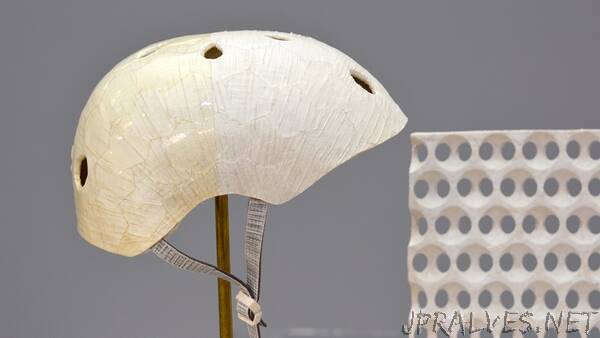
“It can be deformed as required and is three times stronger than natural wood: the wood material developed by Marion Frey, Tobias Keplinger and Ingo Burgert at Empa and ETH Zurich has the potential to become a high-tech material. In the process, the researchers remove precisely the part of the wood that gives it its stability in nature: lignin.
Wood is one of the oldest materials in the world. Wood is light, has excellent mechanical properties, regrows – and binds CO2. Against the background of the current climate debate, the last two properties in particular raise the question of how wood can be used even more and better. Ingo Burgert’s research group at Empa and ETH Zurich have been investigating this question for years. Their aim is to improve the natural properties of wood and equip it with new functions that will broaden the application range for wood.
Together with Tanja Zimmermann, the current head of Empa’s “Functional Materials” department, Ingo Burgert has already created astonishing wooden objects in the “Vision Wood” unit of the NEST experimental building: Door handles made of antimicrobial wood, mineralized wood for improved flame resistance or a pin board made of magnetized wood are just a few examples. After around three years of practical testing, a positive conclusion can be drawn for the first two examples in the “Vision Wood” student apartment. However, there is still room for improvement in the latter. The latest research work of the “Wood Materials Science” group at ETH Zurich and Empa is now opening up new possibilities: “We have found a way of significantly improving the mechanical properties of wood and at the same time making it even easier to equip it with new properties,” says Burgert.
The key lies in delignification and compaction of the wood. Chemically, wood essentially consists of three components: Cellulose, hemicellulose and lignin. The lignin ensures that the long cellulose fibrils are stabilized and do not bend. “We use acid to remove this lignin from the wood and thus remove the natural adhesive,” explains Marion Frey, who is currently doing her doctorate in Burgert’s team. The result: The wood – or rather the remaining white cellulose – can easily be brought into any shape when wet: Between the cells where lignin once provided stability water distributes, dissolves the cell connections and ensures deformability. When the delignified wood is dried, the cells interlock – which in turn leads to stable compounds. The material is then additionally compacted by pressing, so that the researchers ultimately end up with a material about three times stiffer and more tensile than natural spruce. Furthermore, adding a water-repellent coating ensures that the interior of the wood can no longer become damp and thus retains its desired shape.
Simpler functionalization for applications in cars and airplanes
Besides the deformability, the removal of lignin from wood comes with another effect: It leads to a higher porosity. “This is a great advantage for the functionalization of wood. Because there is more space between the cells and in the cell walls, it is easier to introduce other substances into the wood structure that give the modified wood new properties,” says Tobias Keplinger. For example, iron oxide can be inserted into the wood to magnetize it. In their experiments, the researchers were able to show that wood without lignin can be magnetized much better than natural wood – which was previously used in the NEST unit “Vision Wood”.
The researchers see possible applications of their new material in the automotive, aviation and furniture industries. Designer Meri Zirkelbach from Lucerne School of Art and Design has already implemented her first product ideas as part of a master’s thesis. The results include a bicycle helmet, the interior trim of a car door and the side mirror of a vehicle.”
